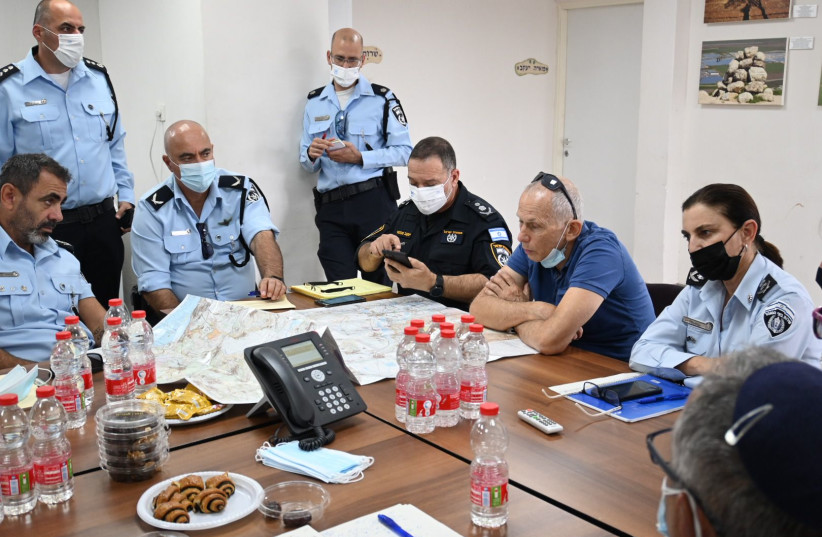Following the investigations into the escape of six terrorist prisoners from Gilboa Prison, multiple security failings were reported on Monday.
To begin with, both Gilboa Prison and neighboring Shita Prison, in the Gilboa Valley near Jenin, have foiled escape attempts in the past. A year-and-a-half ago, a special wing was built in Shita. Tens of millions of shekels went into this wing, which was specially designed for the security prisoners like the ones that escaped on Monday. The goal was to take the dangerous terrorists from Hamas, Islamic Jihad and other major terror groups and put them in high-security incarceration. Many terrorists, among them Zakaria Zubeidi, were transferred to this wing.
When the new prison warden took office, however, she decided to break up the wing and send the terrorists back to the prisons they had come from. Of all the prisons they were sent to, only Hadarim Prison in Even Yehuda had the same level of security as the special wing.
The procedure at Gilboa Prison was to move the prisoners to different cells every six months and not to mix members of different terror groups. The investigation revealed that Zubeidi, who is a member of Fatah, made the request himself to be placed in the same cell as the five members of Islamic Jihad he eventually escaped with. For some reason, the request did not raise any red flags and was granted - against protocol.
Another issue with the assignment of cellmates is that three of the escapees had made an escape attempt in the past, Walla reported, but they had been allowed to remain in the same cell regardless.

A senior official in the IPS told Ynet on Monday that the prison guards did not conduct the daily searches they were supposed to because they were scared of the security prisoners. This fear allowed the escapees to dig their tunnel without being discovered.
Another issue with the prison's security was that the blueprints of the prison were available for anyone to see on the website of an architecture firm that took part in the construction, N12 reported, adding that as of Monday it was not known if the blueprints were used in planning the escape.
The site also had blueprints of a number of other prisons, N12 reported. Following the escape, the site was taken down.
The prison itself was not built securely. Public Security Minister Omer Bar-Lev told N12 that the prison was built on stilts, which meant there were air pockets at various locations under the prison, making the task of digging an escape tunnel easier.
The security was also not as strong as it was supposed to be. According to N12, the escapees probably got help from outside and were in contact with their abettors using a cellphone that had been smuggled into the prison. The prison was reportedly given an advanced security system that would block calls to and from cell phones, but the system was never activated.
The delayed response to the escape gave the escapees a head start of an hour-and-a-half. According to Ynet, the escape began at around 1:30 a.m. but was only discovered at 3:00 – even though police received a call from a farmer in the area at 1:50 reporting suspicious activity on his farm near the prison.
In terms of the people who hold key roles in the Israel Prison Service (IPS), Maariv reported that the head of the intelligence department does not have any experience in intelligence, while the commander of the North District holds the equivalent of a major general ranking while having served in the previous rank of brigadier general for only seven months.
